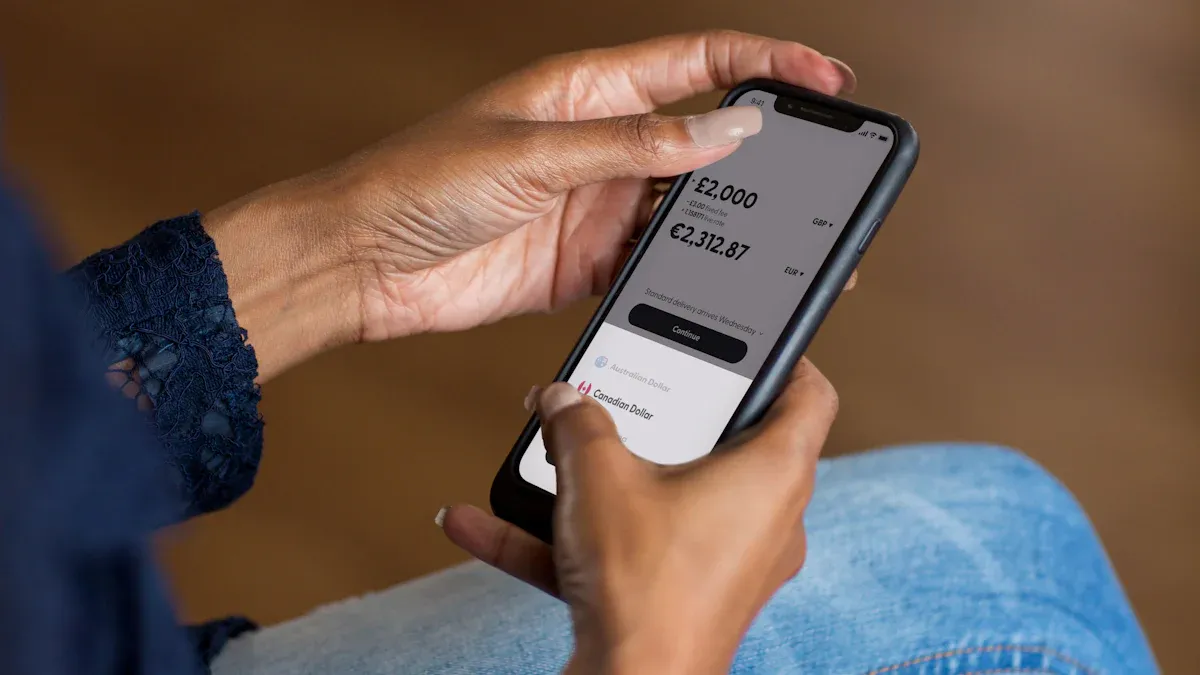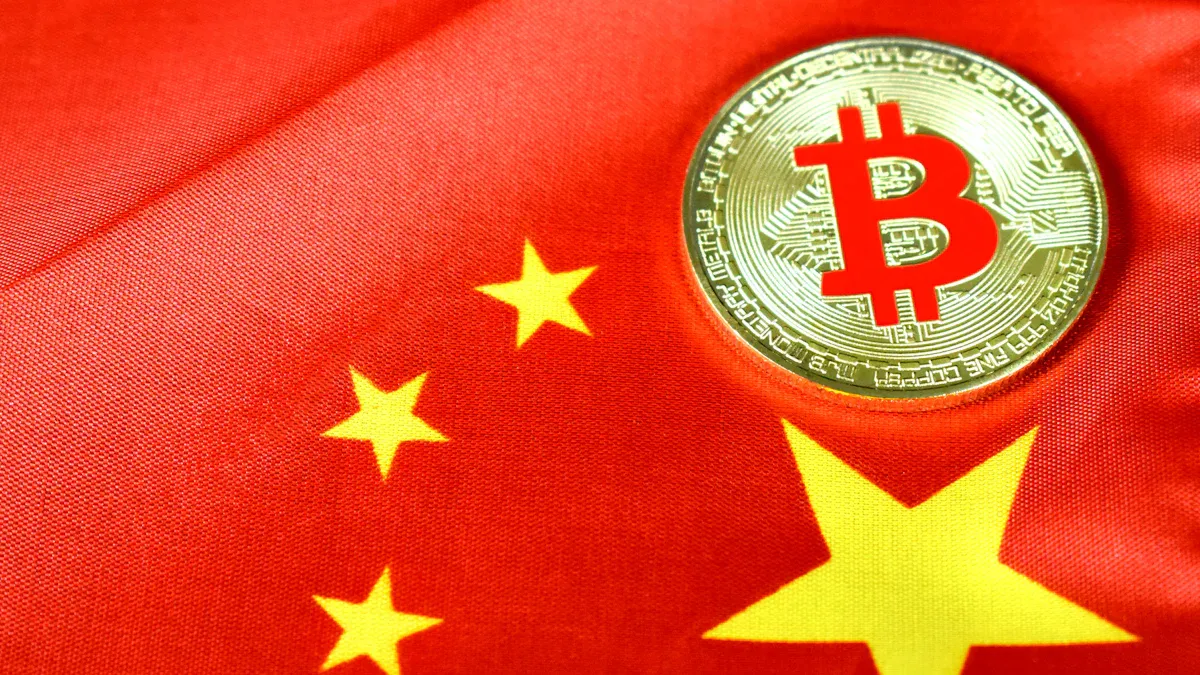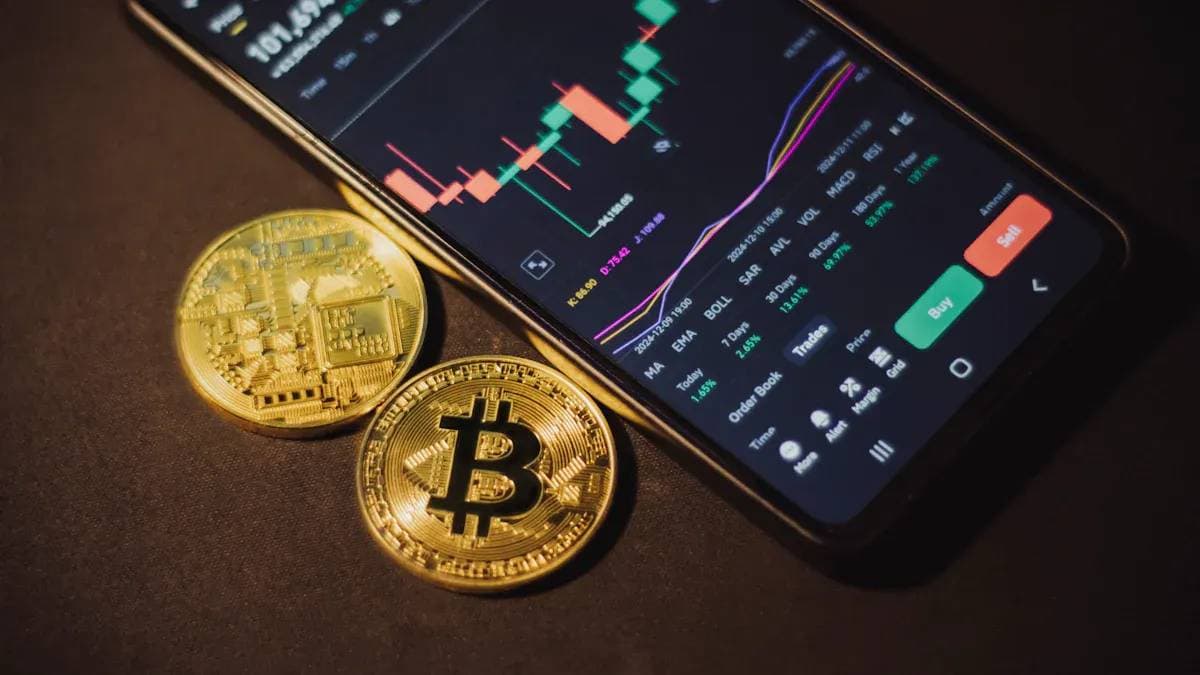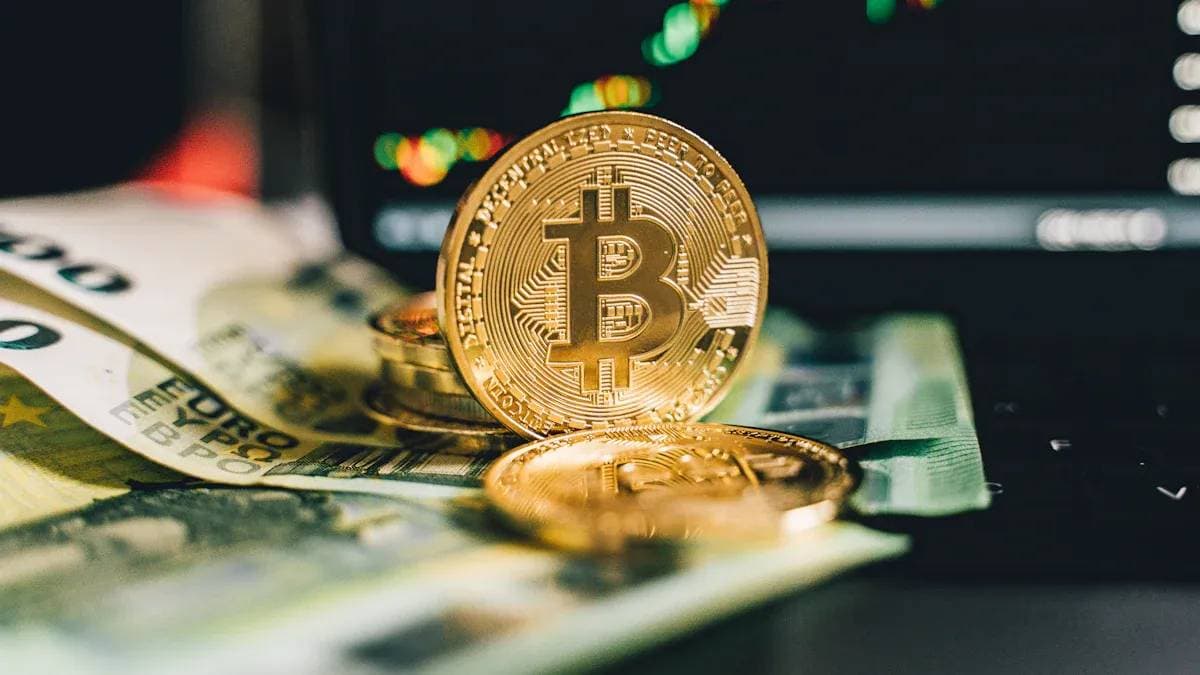- EasyCard
- Trade
- Help
- Announcement
- Academy
- SWIFT Code
- Iban Number
- Referral
- Customer Service
- Blog
- Creator
Remitting from China to Overseas: How Cryptocurrency Achieves Delivery Within 1 Hour

Image Source: unsplash
You can safely complete a cross-border remittance within 1 hour. The method uses the stablecoin USDT and the TRC-20 network, operating through a P2P platform on an exchange. The entire cryptocurrency remittance process can even finish in as little as ten minutes at its fastest. China’s digital remittance market is growing rapidly, showing huge demand for efficient solutions.
| Metric | 2024 | 2032 | Compound Annual Growth Rate (2025-2032) |
|---|---|---|---|
| China Digital Remittance Market Size | $30.56 billion | $142.75 billion | 21.2% |
This is a practical guide. It will break down every step from purchasing cryptocurrency with RMB to the overseas recipient receiving local fiat currency.
Core Points
- Cryptocurrency remittances are fast; you can complete cross-border transfers within 1 hour.
- Using USDT stablecoin and the TRC-20 network ensures stable remittances with low fees.
- Buying and selling USDT via P2P platforms allows direct conversion from RMB to cryptocurrency and then to local fiat.
- In P2P transactions, selecting merchants with high completion rates and many transactions ensures your fund security.
Core Advantages of Cryptocurrency Cross-Border Transfers

Image Source: pexels
You may wonder why cryptocurrency remittances are so efficient. The answer lies in disrupting three core limitations of traditional finance: operating hours, processing speed, and complex procedures.
7x24-Hour Trading: Say Goodbye to Bank Hours
The cryptocurrency market never sleeps. You can trade anytime, whether late at night, on weekends, or during public holidays. This contrasts sharply with traditional banks’ strict operating hours. Banks process international wire transfers within fixed time windows.
Example of Traditional Bank International Wire Transfer Service Hours Bank systems may undergo maintenance on weekends, public holidays, and overnight periods (e.g., 21:30 to 8:00 the next day). Remittance instructions submitted during these times will be delayed.
| Currency Type | Service Dates | Service Hours |
|---|---|---|
| Most Currencies | Monday to Friday | 09:00 - 15:30 |
| JPY, AUD, etc. | Monday to Friday | 09:00 - 15:30 |
This means if your remittance misses the cutoff, it waits until the next business day. Cryptocurrency’s 7x24-hour availability completely solves this, freeing your fund flows from restrictions.
Minute-Level Confirmation: Blockchain’s High-Speed Network
Blockchain technology delivers unprecedented speed. When you initiate a transfer, confirmation no longer takes hours or days. For example, on the TRON (TRC-20) network, transactions average just 3 minutes for confirmation.
In contrast, the traditional SWIFT system may take 2 to 5 business days to settle a cross-border remittance. This delay stems from its outdated systems and clearing window restrictions across time zones. Cryptocurrency remittances complete directly on the blockchain, achieving minute-level fast confirmations.
Simplified Process: Bypass Traditional Correspondent Banks
Traditional remittances are like an international relay race. Your funds pass through multiple intermediary banks (correspondent banks) to reach the final destination. Each “handoff” adds time, cost, and potential errors. The SWIFT system relies on this complex network, involving reconciliation and pre-funding across multiple accounts.
Cryptocurrency remittances are a direct peer-to-peer highway. You send digital assets straight from your wallet to the recipient’s wallet. The entire process is a single, transparent on-chain transaction, completely bypassing all intermediary links, fundamentally simplifying the process and boosting efficiency.
1-Hour Cryptocurrency Remittance: Step-by-Step Operation Guide

Image Source: unsplash
Now, you will learn how to put theory into practice. Follow these three core steps to complete an end-to-end cross-border remittance within 1 hour. The process is clear and efficient, with explicit time expectations for each step.
- Step 1: Buy USDT (Estimated time: 15-20 minutes)
- Step 2: Transfer USDT (Estimated time: 5 minutes)
- Step 3: Sell USDT (Estimated time: 30-40 minutes)
Step 1: Buy USDT on a P2P Platform
Your first step is to convert RMB to cryptocurrency in mainland China. The most direct way is through a P2P (peer-to-peer) platform built into a cryptocurrency exchange. Platforms like Biyapay offer convenient P2P markets.
On P2P platforms, you trade directly with other users, not the platform. The platform acts as an escrow to ensure transaction security. The operation process is:
- Find Merchants: In the P2P market, you see many merchant ads willing to sell USDT and accept RMB payments.
- Place Order: Select a merchant with a suitable exchange rate and limit, enter the USDT amount you want to buy, and place the order.
- Pay: The platform locks the merchant’s USDT. You pay the corresponding RMB using the merchant’s provided method (e.g., Alipay, WeChat Pay, or bank transfer).
- Wait for Release: After payment, click “I have paid” on the platform and wait. Once the merchant confirms receipt, the platform releases the locked USDT to your account wallet.
This process usually completes in 15 to 20 minutes, very efficient.
Step 2: Transfer USDT via the TRC-20 Network
Once you have USDT, the next step is to send it to the overseas recipient. This is the fastest step in the cryptocurrency remittance process.
You need to:
- Get Recipient Address: First, obtain a USDT wallet address supporting the TRC-20 network from the recipient. This address is a unique string of characters.
- Initiate Transfer: In your exchange or wallet app, select “Withdraw” or “Transfer.”
- Fill Information: Paste the recipient’s wallet address, select the transfer network as TRON (TRC-20), and enter the USDT amount.
- Confirm and Send: Double-check the address and network, then confirm the transaction.
After submission, track the transfer status in real-time on a blockchain explorer (like Tronscan) using the transaction ID (TxID). Usually within minutes, the network confirms the transaction, and the recipient sees the USDT in their wallet.
Step 3: Recipient Sells USDT on Local P2P Platform
After receiving USDT, the final step is converting it to local fiat currency, such as USD, EUR, or JPY. This process mirrors buying USDT but in reverse.
The recipient operates on a local P2P platform (like Biyapay, Paxful, or Bybit). These global platforms support over 350 local payment methods, including local bank transfers and mobile payments, allowing easy USDT trading in local currency.
The recipient’s process is:
- Post Sell Ad: Create a sell USDT ad on the P2P platform, setting accepted payment methods and price.
- Wait for Buyer Payment: When a buyer orders, the platform locks the recipient’s USDT. Wait for the buyer to pay via the chosen method.
- Confirm Receipt and Release: This is critical. The recipient must log into their bank or payment app to confirm full funds received.
Security Red Line: Never click “Confirm Receipt” or “Release Cryptocurrency” on the P2P platform until 100% sure you have received the full amount. Once clicked, the transaction is irreversible.
The speed of this sell process depends on buyer payment speed and bank processing. Choosing reputable buyers and instant payment methods usually completes in about 30 minutes.
Key: How to Screen Reliable P2P Merchants
P2P transaction security largely depends on your counterparty. Platforms provide metrics to identify reliable merchants. Focus on these when selecting:
| Metric | Explanation | Why Important |
|---|---|---|
| Completion Rate | Percentage of orders successfully completed by the merchant in the past 30 days. | High rate (e.g., 98%+) indicates good reputation and smooth transactions. |
| Total Trades | Total historical orders completed by the merchant. | More trades (e.g., over 500) means experienced and trustworthy. |
| User Feedback | Positive or negative reviews left by others after trading. | Recent feedback reveals service attitude and efficiency. |
Additionally, most mainstream P2P platforms offer Escrow Service. When you order, the platform temporarily holds the seller’s cryptocurrency. It releases only after you pay and the seller confirms receipt. This prevents fraud and protects both parties.
Speed and Cost Optimization: Best Configuration Choices
You now know the steps, but for truly efficient low-cost remittances, choose the right tools. It’s like driving a sports car—you need the best engine and smoothest track. In cryptocurrency remittances, the optimal combo is USDT stablecoin and the TRON (TRC-20) network.
Coin Choice: Why USDT Stablecoin
For cross-border remittances, you least want fund value shrinking during transfer. That’s why choose USDT, a stablecoin pegged 1:1 to USD.
It solves the biggest issue with cryptocurrencies like Bitcoin: price volatility. USDT provides a stable value medium for worry-free transfers.
Moreover, USDT has massive market liquidity, ensuring easy buying and selling anytime.
| Metric | Value |
|---|---|
| Market Capitalization | $183.41B |
| 24-Hour Trading Volume | $177.34B |
Choosing USDT means stability, efficiency, and globally recognized digital USD.
Network Choice: Why TRON (TRC-20)
After choosing USDT, select a “highway” for it. The TRON network (token standard TRC-20) is currently optimal for two reasons: speed and low fees.
- Fast Speed: TRON processes transactions extremely quickly, with block confirmation in about 3 seconds, far faster than Ethereum (ERC-20)'s 15 seconds. Funds arrive almost instantly.
- Low Fees: This is TRC-20’s most attractive advantage. Compared to Ethereum’s often tens of dollars in fees, TRC-20 fees are usually under $2.
| Feature | ERC20 (Ethereum) | TRC20 (Tron) |
|---|---|---|
| Typical Fee | $30 - $35 | $1 - $2 |
Low fees and lightning speed make TRC-20 ideal for small to large remittances.
Total Cost Calculation: Identify All Fees
To fully control remittance costs, understand all potential fees. Total cost mainly consists of three parts:
- Buy Spread: When buying USDT with fiat on P2P, merchant quotes are slightly above real-time rates; this difference is your buy cost.
- Network Fee: Paid to the blockchain when transferring USDT via TRC-20, usually $1-2.
- Sell Spread: When the recipient sells USDT for local fiat on P2P, buyer bids are slightly below market; this forms the sell cost.
Cost Formula: Total Cost = Buy Spread + Network Fee + Sell Spread
With this simple framework, estimate total fees in advance to avoid unexpected costs during remittance.
You now master the core method: follow the “P2P buy USDT → TRC-20 transfer → P2P sell” three-step approach. With this guide’s configuration, completing cryptocurrency remittance within 1 hour is entirely realistic.
⚠️ Security and Compliance Reminder While enjoying efficiency and convenience, stay vigilant. Understand and comply with laws, regulations, and tax requirements in mainland China and the receiving location. Also, take necessary security measures like enabling two-factor authentication (2FA) to protect your funds.
FAQ
Is This Remittance Method Legal in Mainland China?
You must independently understand and comply with all laws and regulations in mainland China and the receiving location. Cryptocurrency regulations vary by region. You are responsible for ensuring compliance before any transaction.
Is P2P Trading Safe? What If I’m Scammed?
P2P platforms provide escrow to protect funds. The key security rule: never click “Release Cryptocurrency” until your bank account confirms full receipt. This action is irreversible.
What If I Select the Wrong Network or Address During Transfer?
Blockchain transfers are irrevocable. Sending to a wrong address or wrong network (e.g., TRC-20 tokens to ERC-20 address) likely results in permanent loss. Double-check before transferring.
Are There Remittance Amount Limits with This Method?
Limits mainly depend on P2P merchant transaction caps. Each sets minimum and maximum per trade. For large remittances, choose merchants supporting large trades or split into multiple transactions.
*This article is provided for general information purposes and does not constitute legal, tax or other professional advice from BiyaPay or its subsidiaries and its affiliates, and it is not intended as a substitute for obtaining advice from a financial advisor or any other professional.
We make no representations, warranties or warranties, express or implied, as to the accuracy, completeness or timeliness of the contents of this publication.




Contact Us
Company and Team
BiyaPay Products
Customer Services
BIYA GLOBAL LLC is a licensed entity registered with the U.S. Securities and Exchange Commission (SEC No.: 802-127417); a certified member of the Financial Industry Regulatory Authority (FINRA) (Central Registration Depository CRD No.: 325027); regulated by the Financial Industry Regulatory Authority (FINRA) and the U.S. Securities and Exchange Commission (SEC).
BIYA GLOBAL LLC is registered with the Financial Crimes Enforcement Network (FinCEN), an agency under the U.S. Department of the Treasury, as a Money Services Business (MSB), with registration number 31000218637349, and regulated by the Financial Crimes Enforcement Network (FinCEN).
BIYA GLOBAL LIMITED is a registered Financial Service Provider (FSP) in New Zealand, with registration number FSP1007221, and is also a registered member of the Financial Services Complaints Limited (FSCL), an independent dispute resolution scheme in New Zealand.



















